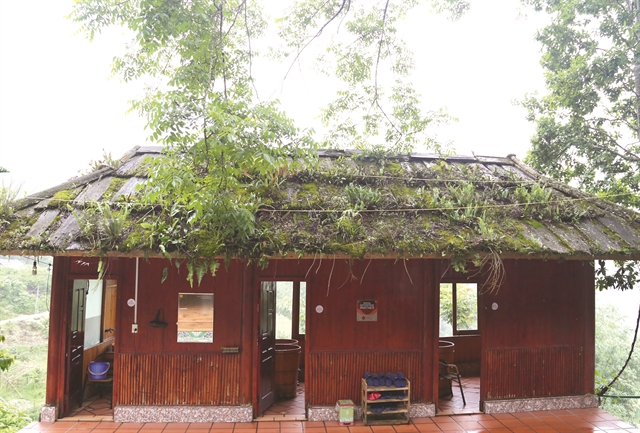
A herbal bath service with a view of the nature of Sapanapro Company in Tả Phìn Commune. — VNS Photo Hồng Minh
Hồng Minh
I love a hot bath. And I love the smell of traditional herbs. Seriously, who doesn’t?
Sơn, a friend of mine from the northern mountainous province of Lào Cai, knows my love for a bath well, so he insisted on taking me to enjoy the herbal hot bath of the local Dao Đỏ (Red Dao) ethnic people when I had a trip to his hometown.
As someone familiar with every corner of Sa Pa Town, the first thing he did was take a tired and untidy me after a more-than-three-hour car ride from Hà Nội out of the hotel and throw me on the back of his motorbike to get out of the town centre.
“Forget about the herbal bath services in Sa Pa centre!” he said.
“If you want to experience an authentic Dao Đỏ herbal bath, you have to do it at Tả Phìn.”
Tả Phìn is a small commune in Sa Pa District, some 12 km northeast of Sa Pa Town. Nestled in the beautiful and pristine Mường Hoa Valley, it is home to different ethnic minorities, mostly Dao Đỏ.
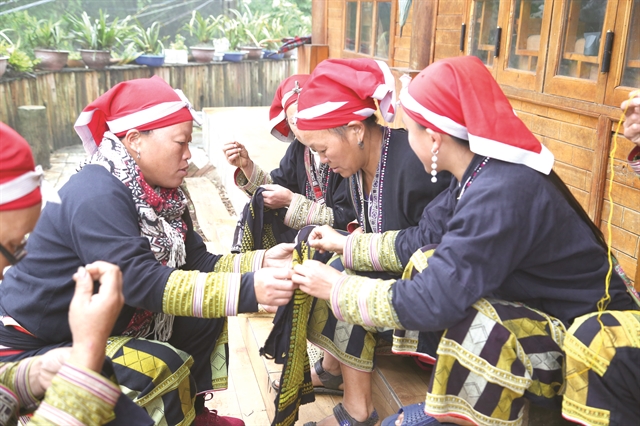
Dao Đỏ women make brocades outside a herbal bath service. — VNS Photo Hồng Minh
Sơn told me that the services originated from Dao Đỏ people’s tradition to collect special herbs from the forest and boil them to bathe at the year-end as a spiritual way to clean and refresh themselves to welcome a new year. Seeing the effectiveness of the herbal baths on their health, over time, Dao Đỏ people started to make it a treatment and then tourist service.
They have mastered the formula so that each bathtub uses more than 10 types of herbs, sometimes more than 100, depending on the purpose, like bath water for women after childbirth, to relieve aches and pains of muscles, bones, joints or treat flu or dermatology problems, Sơn said.
I couldn't have been more excited.
The road to Tả Phìn was winding on the hillside. After getting out of the town centre, a peaceful and pleasant scene gradually appeared before my eyes with flowers and leaves sprouting together on the two sides of the road. And of course, the typical terraced fields of the northern mountains of Việt Nam were there to admire.
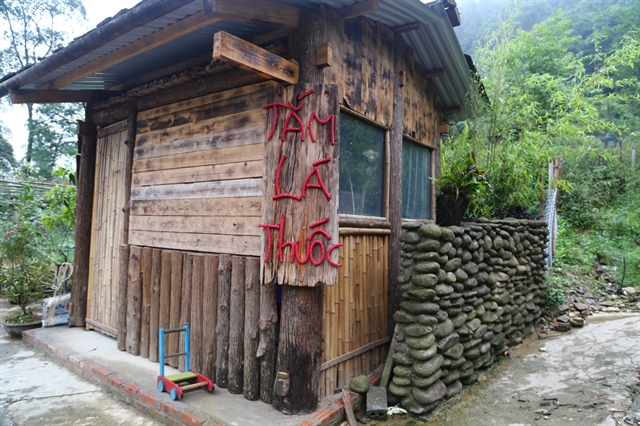
Tắm lá thuốc (herbal bath) has become popular in Tả Phìn. — VNS Photo Hồng Minh
Here and there on the road, we saw more and more Dao Đỏ women in their traditional handmade brocade clothes, with their heads covered with red scarves. We also saw more boards advertising tắm lá thuốc (herbal bath) on the road. As the services have developed in the commune, local people have decorated their service places beautifully and traditionally like a small boutique resort or spa.
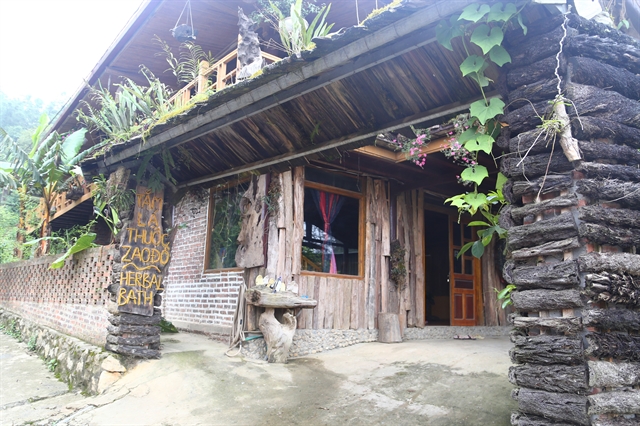
Local people decorate their service places beautifully and traditionally like a small boutique resort or spa. — VNS Photo Hồng Minh
We arrived at Tả Chải Village which had a dozen places providing herbal bath services and soon chose the Red Dao Community Co-operative for our bath.
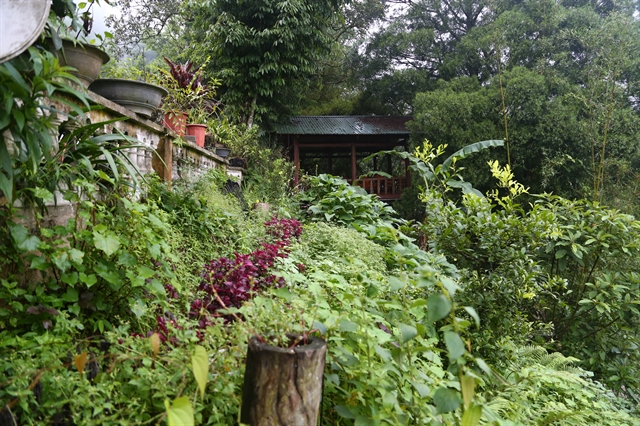
Some kinds of herbs and plants have been grown in the garden of Sapanapro Company. — VNS Photo Hồng Minh
Sơn explained that different places have different formulas for their water that normally is hereditary within a family. Every day, people in the village still go to the forest to collect wild herbs and plants.
“Only experienced collectors can recognise all the necessary herbs and plants,” Sơn said.
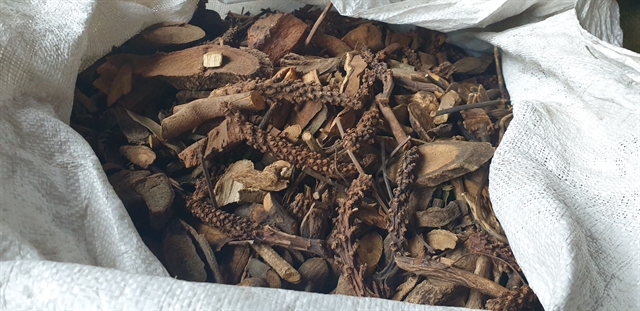
Herbs and plants are sometimes dried to keep in case they are out of season. — VNS Photo Hồng Minh
The herbs and plants are chopped into pieces and boiled for hours, even for a whole day, to get the extracts before being poured into a bathtub for visitors.
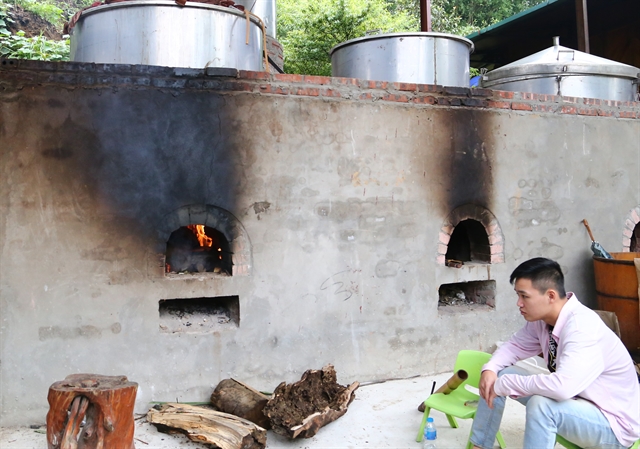
A man watches the herbs and plants boil at Red Dao Community Co-operative. — VNS Photo Hồng Minh
In a small, private room, I really enjoyed the hot steam and fragrance of herbs from a Siam wood. The Bordeaux-like water was mixed with hot water, making a bubble layer on top.
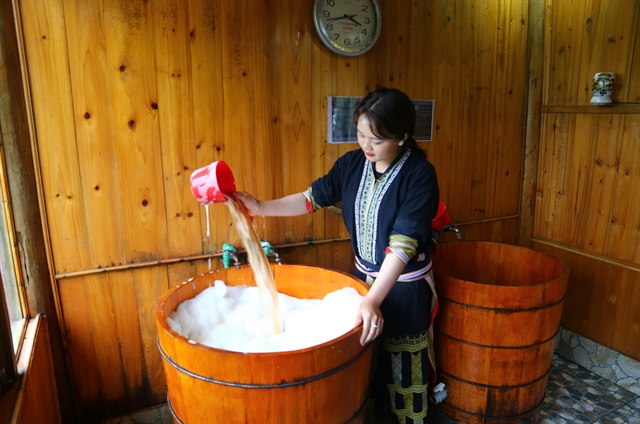
A local woman prepares the bathtub for visitors. — VNS Photo Hồng Minh
I soon soaked in the bath and the bubbles after the water temperature was tested carefully. Then an exciting journey of enjoyment began.
A tingling sensation appeared in the first few seconds due to the temperature of the water and, probably, some spicy herbs. The odour of different herbs came into my nose, eyes and mouth. Immediately, all my senses fell into a state of floating and smoothness. My skin turned red. I felt sweat on my forehead and the nape of my neck. All my muscles were like a loose string. With a view of mountains and fields outside the window, I dreamed of being in an onsen (hot spring) in Japan.
I was advised to stay in the tub for about 15-20 minutes as long soaking may cause dizziness.
The Dao Đỏ herbal bath is also not suitable for people with blood pressure problems, pregnant women and people with weak health conditions.
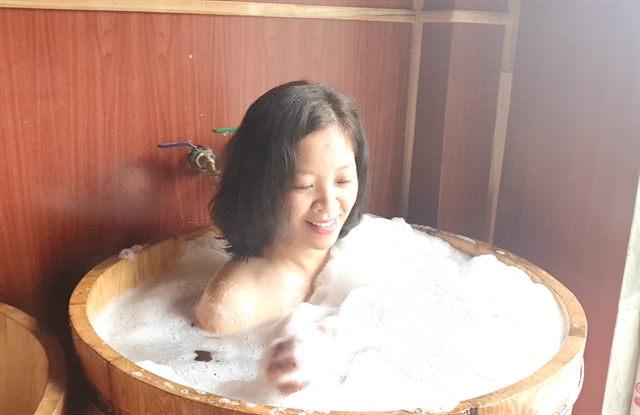
A visitor enjoys a Dao Đỏ herbal bath. — VNS Photo Hồng Minh
After 15 minutes, I stepped out of the tub with refreshment, relaxation and lightness. Inhaling the warm scent of aromatic steam, I felt refreshed and gentle. A rosy complexion was a bonus.
The Dao Đỏ herbal bath was indeed a cure for me.
An entrance fee to Tả Phìn Commune of VNĐ70,000 might be a bit steep to some. But the bathing services range from VNĐ80,000-100,000 was quite reasonable, which was worth every penny.
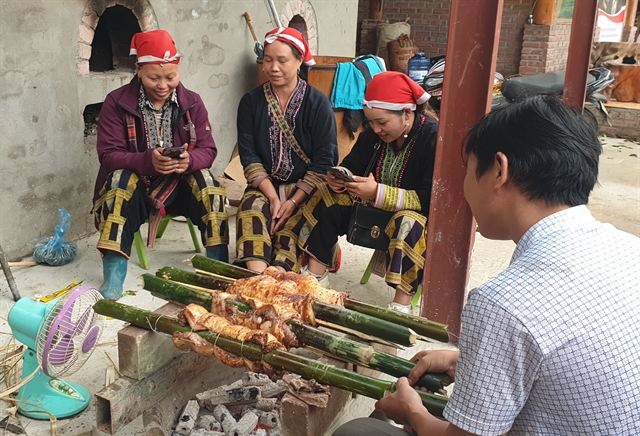
GETTING HUNGRY: Dao Đỏ people prepare meals for visitors. — VNS Photo Hồng Minh
Of course, there is more to Tả Phìn than herbal baths.
After a refreshing bath, I and other visitors got a treat from Dao Đỏ people with a Tả Phìn-style buffet full of local dishes including five-coloured steamed sticky rice, grilled pork, boiled bamboo shoots and fresh vegetables served on big trays. A clean and comfy mattress was waiting for me at a local stilt-house homestay. And friendly Dao Đỏ women in traditional clothes happily saluted me on the way. All those things really made my day in Tả Phìn! — VNS
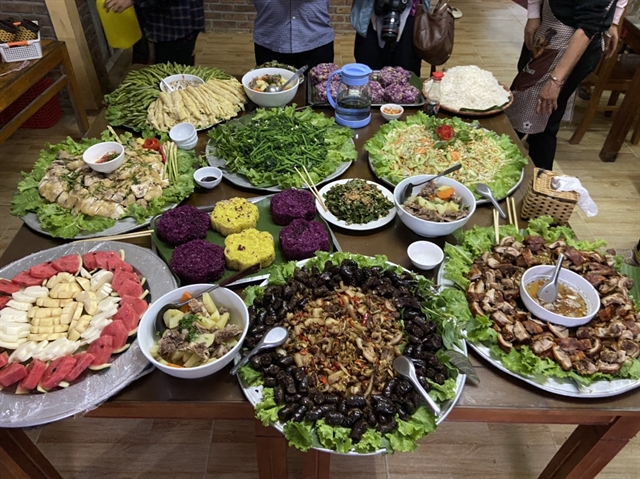
A buffet-style colourful and nutritious dinner that was served to visitors in Tả Phìn. — VNS Photos Hồng Minh
OVietnam